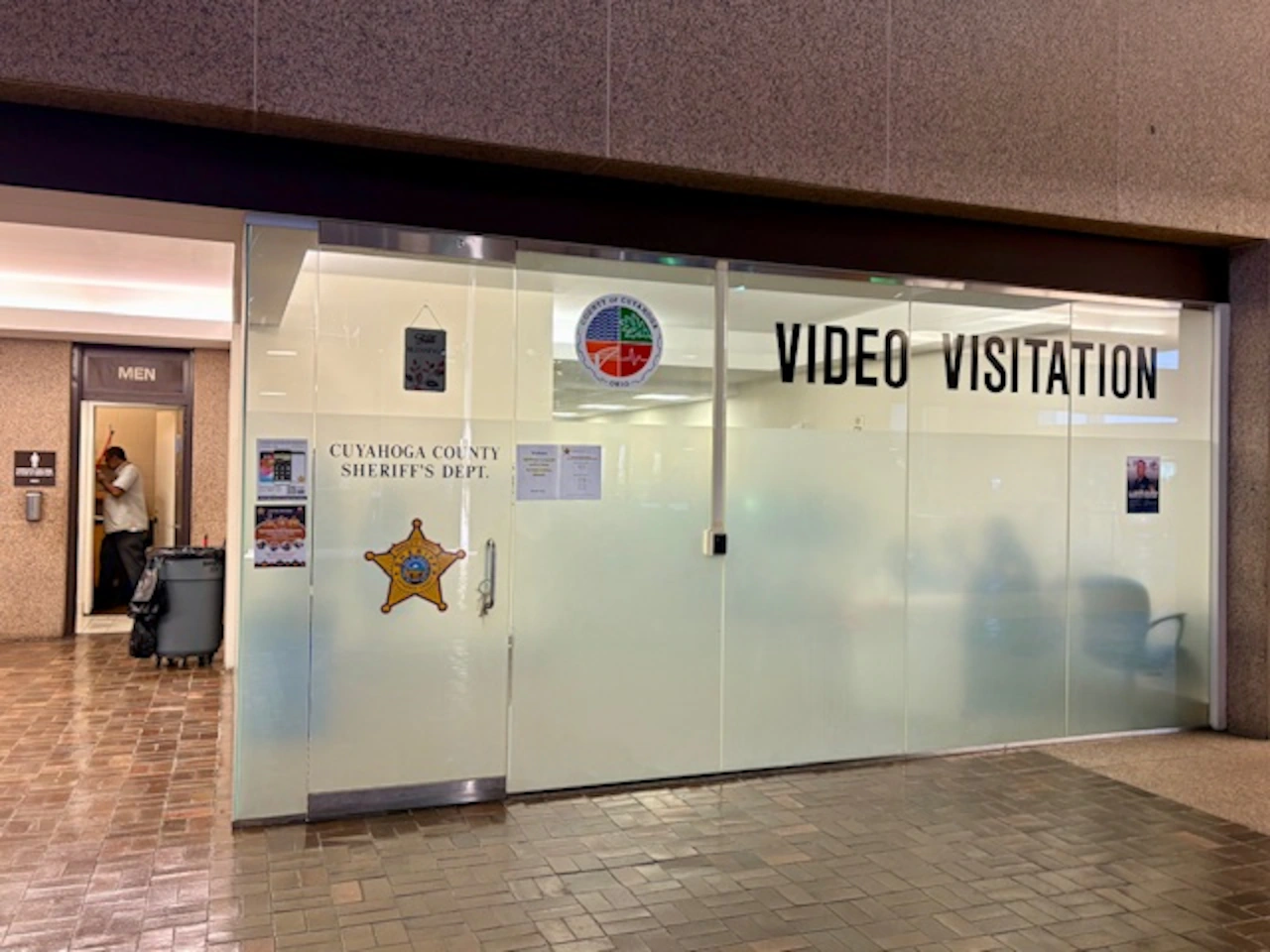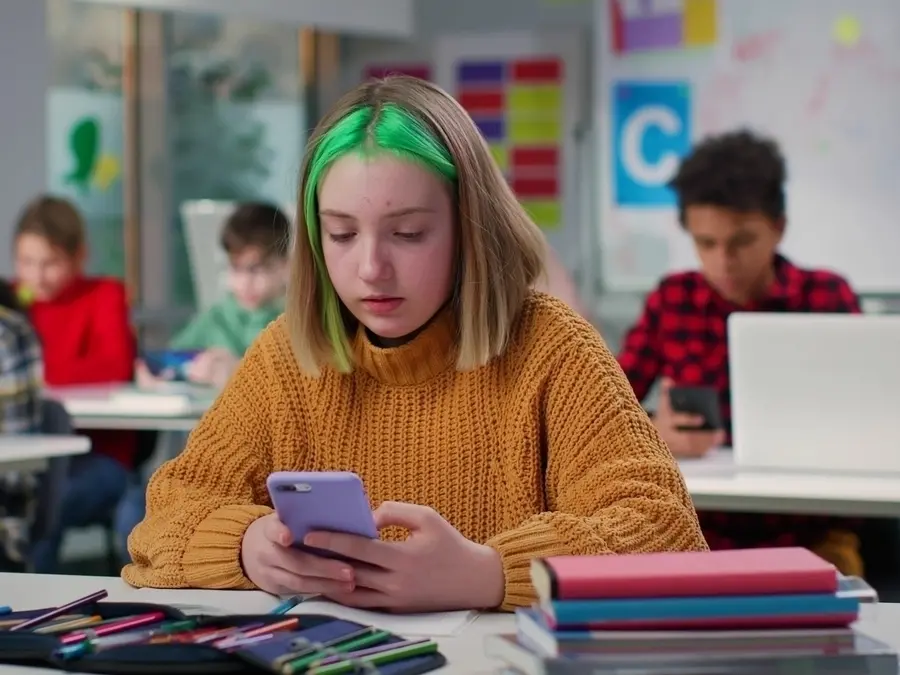
CLEVELAND, Ohio — For the first time since the start of the pandemic five years ago, persons held in the Cuyahoga County jail will be able to speak face-to-face with their loved ones.
The county announced Thursday that it is restoring in-person visitation in the jail, allowing inmates to be closer with their families, friends or clergy, though still separated by glass. The visits can be scheduled on weekdays from 8:30-11:30 a.m. or 1:30-4:30 p.m.
Sheriff Harold Pretel said he hopes the visits will not only help residents stay connected with their families but encourage good behavior in the jail and promote better community relationships.
“We have the capability. Why not do it and facilitate something they want,” Pretel told cleveland.com and The Plain Dealer Thursday. “It adds value to the experience for residents during their time here.”
The county transitioned to video-only visitation in February 2020, just before the start of the COVID-19 pandemic for safety reasons, but critics viewed it as a “dehumanizing” money-making endeavor. At the time, the county was still offering free Skype-like sessions if individuals were able to trek downtown, but otherwise, families and friends were going to have to pay nearly $13 for a 20-minute conversation with their loved one in the jail.
The cost was quickly reduced. Today, video calls cost $4 per 25-minute session, and residents can still video call from the downtown jail for free. But Pretel said the in-person visits now give families another option to stay connected.
Executive Chris Ronayne has been pushing to restore in-person visitation for a year, following public outcry and a report from the criminal justice reform group Wren Collective, that condemned the county’s video visitation policy for allowing prosecutors to listen to recorded video calls without a warrant. The report called for residents to be able to prepare their defense and stay in touch with loved ones without having every word scrutinized and potentially used against them.
In a news release Thursday, he praised the return of in-person visits as a matter of dignity.
“Family connections are an important part of rehabilitation,” Ronayne said. “By restoring in-person visitation, we ensure individuals in our custody can maintain meaningful relationships. These connections foster a more supportive environment and strengthen the well-being of those in our care.”
How it will work
Inmates are allowed one in-person visit a week, with up to two visitors and two children, ages 5 to 17, at a time. All visitors must register online and be approved prior to the scheduled time.
To register, visitors must have a valid driver’s license or state ID and fill out an application, consisting of two forms for adults and a third form for minors. The forms seek basic information, such as the individual’s name, address and the last four digits of their social security number, which are used to complete a background check.
For minor children over the age of 5, the sheriff’s department also requires proof of age and guardianship through an Authorization for Minor Child Visitation form, which must be notarized and returned to: BehindGlass@cuyahogacounty.gov.
Applications are expected to be reviewed within 48 hours and the requester notified by email whether they’ve been approved or denied, according to the sheriff’s website. Once approved, individuals will receive a phone number they can call to schedule their visit.
Anyone who was denied can reapply in six months. Full visitation rules are posted on the county’s website.
On-site and remote video visitation options also remain available, “ensuring flexibility and access for those who are unable to visit in-person,” the county said.
On-site video visits can be scheduled in 20-minute sessions, Monday–Friday from 8:30–11:30 a.m. and 1:30–4:30 p.m. Sessions are free, but limited to once a week.
Remote video visits can be scheduled during the same days and times, but with the addition of 7-9 p.m. on weekdays and on weekends, from 8:30-10 a.m. and 7 to 9 p.m. Those visits cost $4 per 25-minute session but are unlimited.
The department has already received about 50 applications for in-person visits, Pretel said, but so far, none of the requesters has been eligible. They’ve been prohibited by criminal histories, active warrants or orders from the court barring contact with the inmate while their case is ongoing. Most people in the jail are being held pre-trial, meaning they’ve been accused of crimes but not convicted.
Pretel said the department is reviewing the eligibility criteria to determine if modifications are possible to allow more visits.
Eventually, the county also hopes to offer in-person contact visits, where residents can hug their loved ones. Laurel Diaz, the county’s first justice and health equity officer, said they are planning to build space for the visits in the new jail, which she said will be especially beneficial for those serving up to one-year sentences in the jail, so they can stay connected to their kids and families.
More to come
The return of in-person visitation is part of a broader county effort to restore programming and improve outcomes for inmates.
County leaders have repeatedly pointed to the new $900 million facility as a solution to reported “inhumane” conditions in the jail — primarily related to a lack of space and natural light but also access to programming and health care. But Pretel has said he will not wait years for the county to build a new jail before improving conditions inside the current facility.
He’s already initiated other upgrades in the jail to improve food and commissary options and replaced 2,000 mattresses, changes which have reportedly been well-received. Future additions could include burger or pizza nights, officials have said, noting they help boost morale and curb fights and complaints.
Pretel’s office has pointed to several other new and existing programs in the facility that officials say are having a positive impact on inmates. Cleveland.com will be highlighting some of those programs in an ongoing series examining what it means to live and rehabilitate inside the county jail.
“Our goal is to ensure that people leave here better than they come,” Pretel said. “We know the numbers; 92% are going to return to our communities…so during their time here, we’re going to deliver programs to improve the individual’s condition for when they’re released and move on.”



